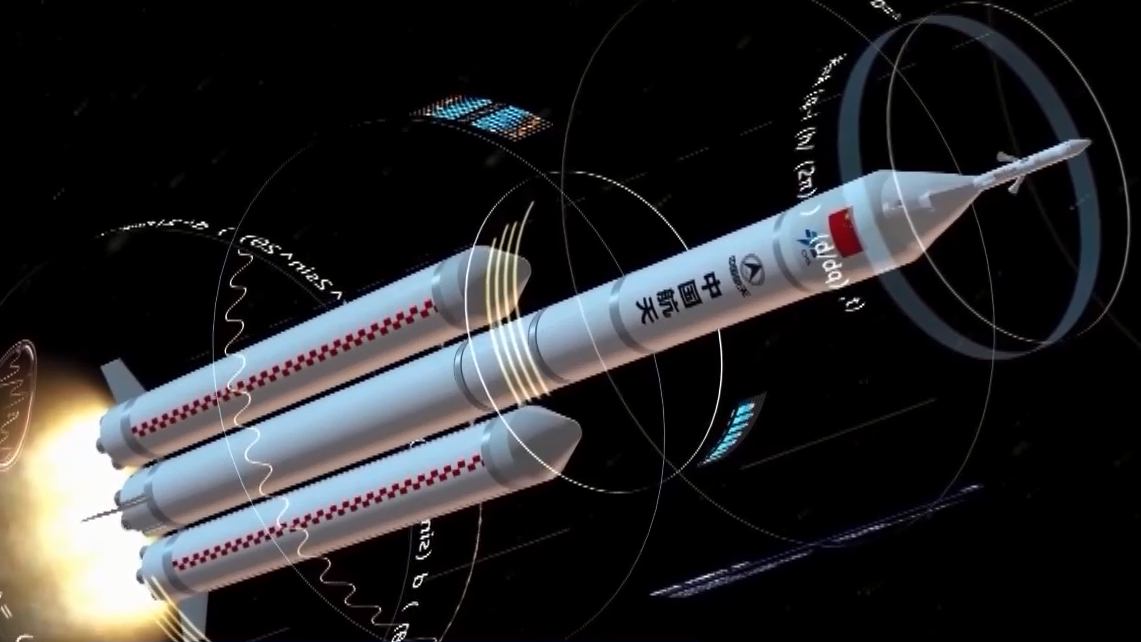
The concept image of the launch of Long March-10. /CMG
The concept image of the launch of Long March-10. /CMG
China revealed more details about its first-ever manned lunar mission coming before 2030 as the country recently released its preliminary plan.
To achieve such an endeavor, the country needs to make an array of renovations and upgrades to the existing space facility models, from carrier rockets to manned spacecraft, as well as create new ones.
Next-generation carrier rocket
The next-generation carrier rocket, named Long March-10, has two configuration designs: a standard combination of first, second and third stage cores, escape tower, and fairing – with boosters or without boosters.
The variant with boosters will be used to send the lunar lander and the spacecraft into trans-lunar orbit.
The trans-lunar orbit is a type of free return trajectory that takes a spacecraft from Earth, around the far side of the moon and back to Earth using only gravity once the initial trajectory is set.
Weighing 2,187 tonnes, the 92-meter-tall rocket variant is more powerful with 2,678 tonnes at liftoff, a significant increase compared to the country's current most powerful carrier rocket, the Long March-5, with a liftoff thrust of over 1,000 tonnes.
Rong Yi, chief designer of the Long March 2F carrier rocket, said the rocket stage has a diameter of five meters with boosters of the same diameter.
"Its top priority is being capable of carrying heavy weight, which is necessary for the manned lunar mission," she said. "So we are expecting the rocket to carry 27 tonnes' payload on trans-lunar orbit or 70 tonnes in low-Earth orbit, which is three times heavier than what Long March-5 can carry."
There's the other rocket type without boosters to help save operation costs, which is designed to serve missions to the space station. The first stage of the rocket will be recyclable.
"We will see these two variants in the coming years," said Rong.
There will be several unmanned test missions before the Long March-10 carrier rockets are put into use for manned missions, which are estimated to make their maiden flight in 2027.
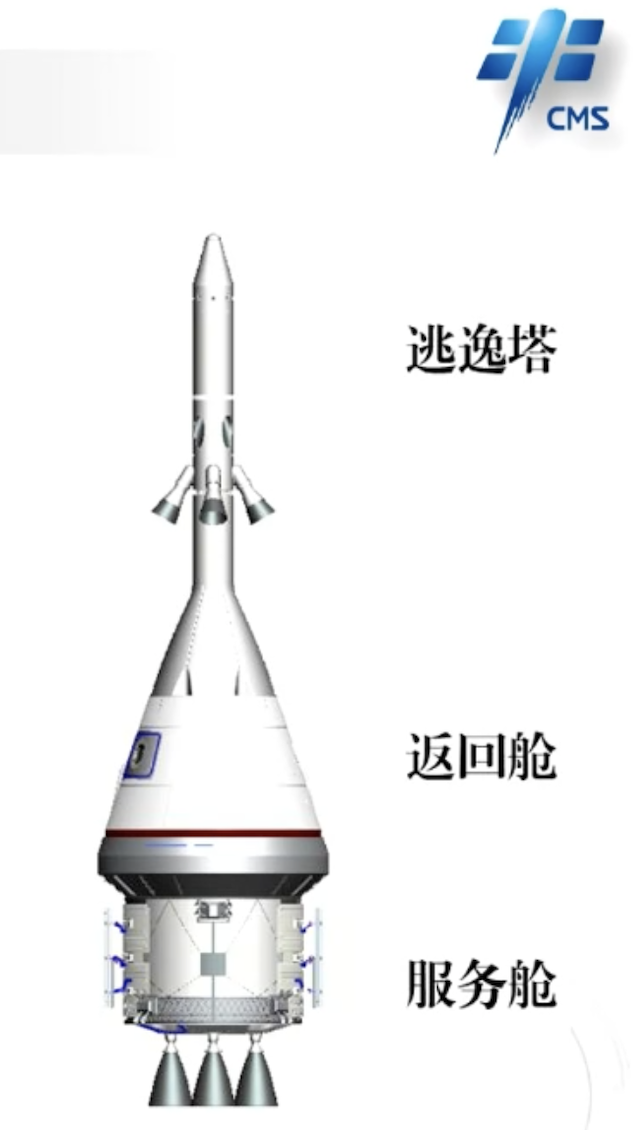
The schematic diagram of the spacecraft including escape tower on the top, reentry capsule in the middle and the service section in the bottom. /China Manned Space Engineering Office
The schematic diagram of the spacecraft including escape tower on the top, reentry capsule in the middle and the service section in the bottom. /China Manned Space Engineering Office
New manned spacecraft
The development of the new generation manned spacecraft is in progress as well. It adopts modular designs, which means the spacecraft can be assembled with different components for different purposes, no matter its mission in low Earth orbit or in deep space.
The new spacecraft consists of an escape tower, a reentry capsule and a service section.
The astronauts will stay and control the spacecraft in the reentry capsule. The escape tower is able to bring the reentry capsule away from the rocket during liftoff once the launch goes wrong to protect the safety of the astronauts. The service section provides propulsion and energy for the spacecraft.
According to Zhang Hailian, deputy chief designer of China's manned space program, the spacecraft weighs about 26 tonnes and can house three astronauts.
Zhang revealed that China is also mulling the development of spacecraft for low-Earth orbit based on current research.
"It can carry 4-7 passengers, creating opportunities for space tourism. The reentry capsule, escape tower and the spacecraft will stay mostly the same except the service section, which is below the volume of the engine and propulsion," he said.
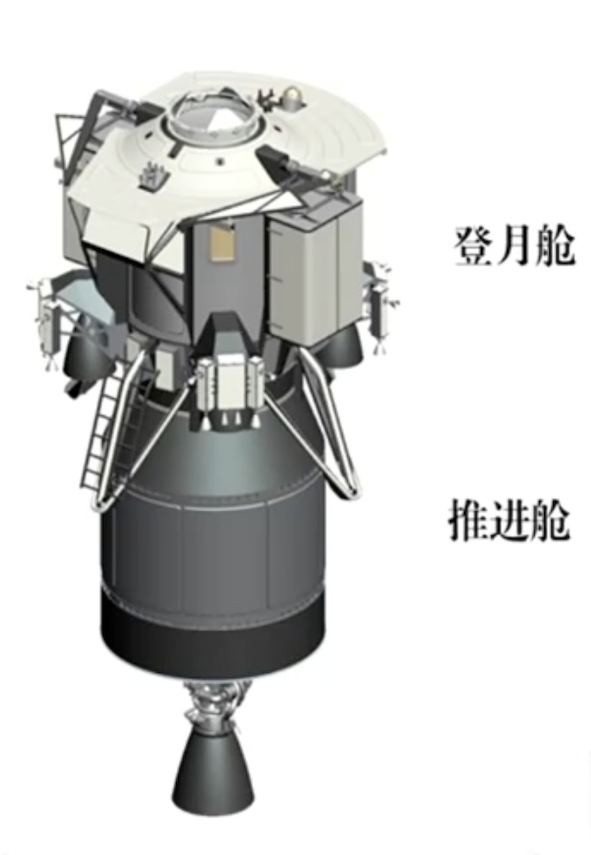
The schematic diagram of the lunar lander and propulsion section. /China Manned Space Engineering Office
The schematic diagram of the lunar lander and propulsion section. /China Manned Space Engineering Office
Lunar lander
The lunar lander, weighing about 26 tonnes, is composed of a lunar module and a propulsion module. It can carry two astronauts to the surface of the moon.
The lunar module carries the astronauts. The propulsion module helps conduct the near-moon braking of the lander and slows it down to touch down on the moon's surface. "It is extremely sensitive to weight, so we need to keep it light with an integrated design," Zhang said.
The lander adopts a lightweight design to improve structural efficiency and has a power redundancy function. It has the capability to fly autonomously.
Zhang explained the lander's job is to bring the astronauts down from the orbit around the moon to the moon's surface and return to the lunar orbit.
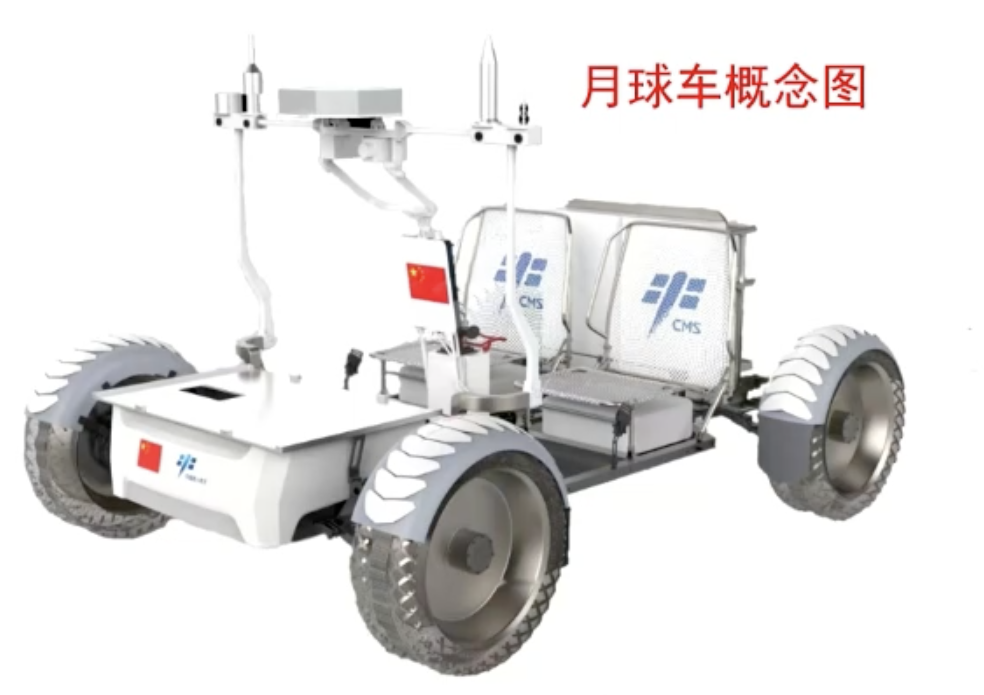
The concept image of China's lunar rover. /China Manned Space Engineering Office
The concept image of China's lunar rover. /China Manned Space Engineering Office
Lunar rover
Weighing 200 kilograms, the lunar rover will be the transportation vehicle for a maximum of two astronauts to conduct their research tasks on the moon.
"The astronauts can collect soil samples and do experiments on the moon within a range of 10 kilometers," said Zhang.
Besides the rover, China plans to send out a mobile laboratory to the moon that can move around autonomously in a wide range, according to Zhang. The astronauts can have a short stay in it as well.
"In the future, maybe we can even consider constructing facilities based on resources on the moon to expand the research base on the moon," Zhang said. "It's a preliminary idea, an idea we need more steps to prove if it works."
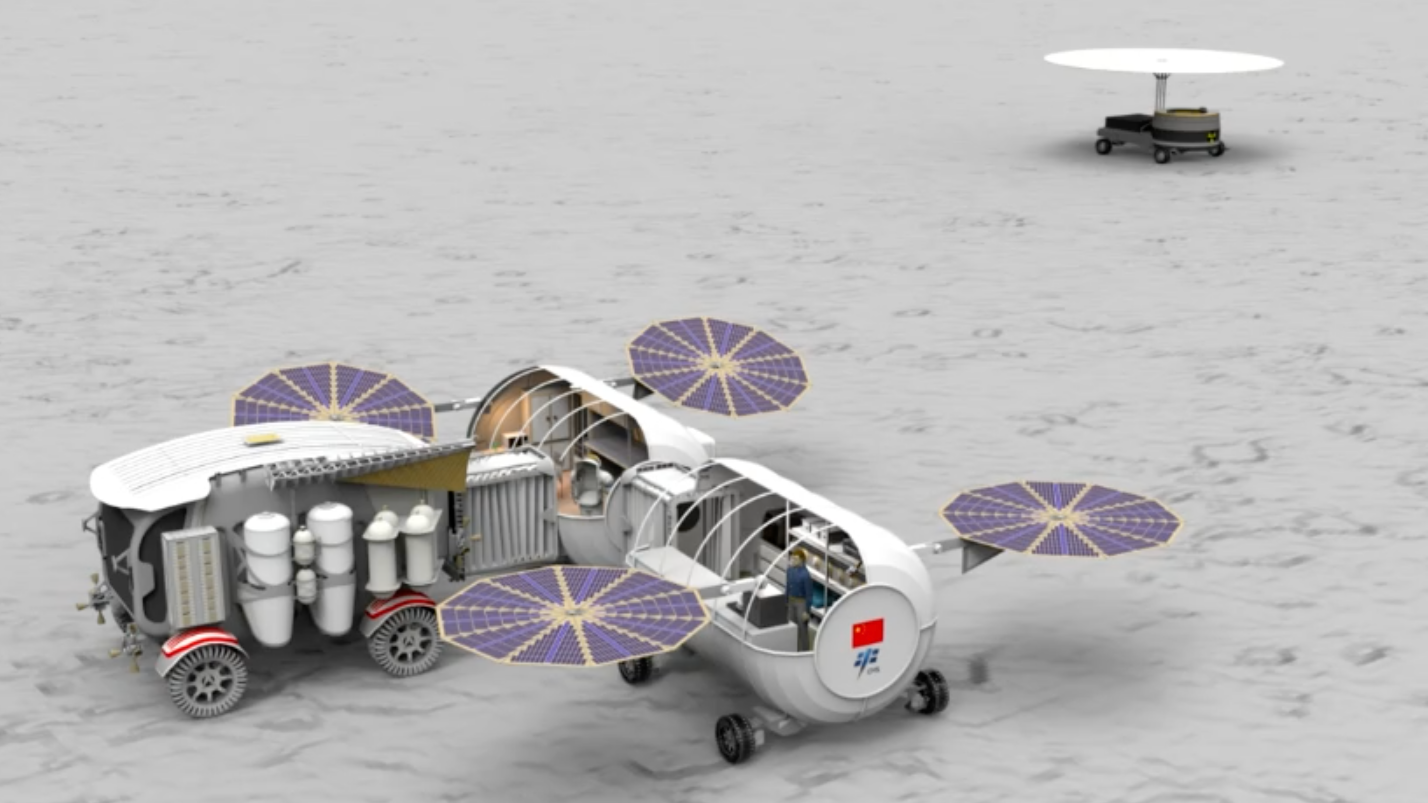
The concept image of China's mobile laboratory on the moon. /China Manned Space Engineering Office
The concept image of China's mobile laboratory on the moon. /China Manned Space Engineering Office